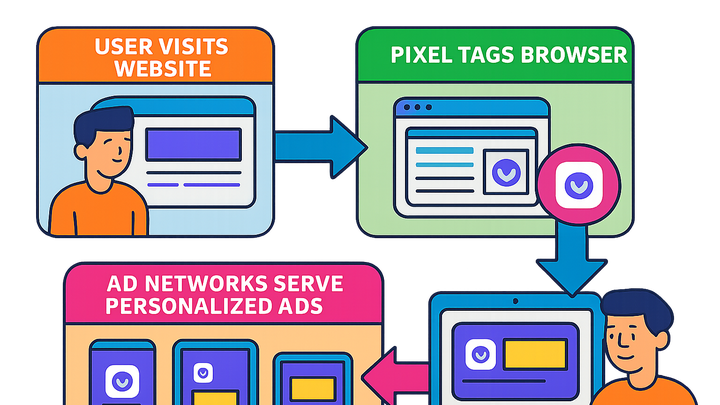Published on 2025-06-29T20:15:50Z
What is Retargeting? Examples of Retargeting
Retargeting, often called remarketing, is a digital marketing tactic that re-engages visitors who previously interacted with your website but did not complete a desired action. It involves placing a tracking pixel or uploading a customer list to target these users with personalized ads across various channels. For CRO specialists, retargeting helps nudge prospects through the conversion funnel, raising overall conversion rates and reducing cost per acquisition. From a UX perspective, tailored ads can enhance brand recall and reinforce messaging continuity, provided they remain non-intrusive. Although retargeting does not directly impact SEO rankings, the uplift in user engagement and repeat site visits can lead to improved behavioral metrics, which search engines value.
Retargeting
Retargeting is a tactic that re-engages past visitors with personalized ads to boost conversions, UX continuity, and engagement metrics.
Understanding Retargeting
Defines retargeting and outlines its main approaches. Essential for CRO, UX, and SEO practitioners to see where retargeting fits in the digital marketing mix.
-
Definition
Retargeting is a form of online advertising that targets users who have previously visited your site or app but did not complete a desired action, such as a purchase or sign-up.
-
Pixel-based retargeting
Involves placing a JavaScript pixel on your pages to track visitor behavior and serve ads based on those interactions.
- Pixel snippet:
A small piece of code added to your site that collects visit data.
- Cookie storage:
Stores user identifiers so ad networks can recognize and target returning visitors.
- Pixel snippet:
-
List-based retargeting
Uses an existing customer list (emails or phone numbers) to match and serve ads to those users on social platforms and ad networks.
How Retargeting Works
Breaks down the technical workflow from initial site visit to ad delivery, highlighting tracking mechanisms and audience segmentation.
-
Tagging and tracking
When a user visits your site, a tracking tag or pixel records their interaction and places a cookie or local identifier in their browser.
- Javascript pixel:
A snippet that loads when a page renders and sends user data to the ad platform.
- Browser cookies:
Small text files that store user identifiers for future ad targeting.
- Javascript pixel:
-
Audience segmentation
Visitors are grouped into segments based on on-site behavior, such as pages viewed, time spent, or items added to cart.
- Behavioral segments:
Segments based on actions like product views or form submissions.
- Demographic segments:
Segments based on age, location, or device type.
- Behavioral segments:
-
Ad delivery
Segmented audiences are targeted with tailored ads across display networks, social media, and search engines to encourage return visits and conversions.
Benefits for CRO, UX, and SEO
Explores how retargeting influences conversion rate optimization, user experience design, and search engine optimization indirectly.
-
Improved conversion rates
By re-engaging interested users, retargeting campaigns often yield higher conversion rates and lower cost per acquisition.
-
Enhanced user experience
Personalized ads that reflect users’ interests create a more relevant brand experience, boosting satisfaction and recall.
-
Seo indirect advantages
Although retargeting doesn’t directly affect search rankings, increased engagement and repeat visits contribute to stronger behavioral metrics valued by search engines.
Best Practices for Effective Retargeting
Key guidelines to maximize retargeting ROI while maintaining compliance and a positive user perception.
-
Frequency capping
Limit how often an ad is shown to the same user to prevent ad fatigue and negative brand perception.
-
Creative variation
Rotate ad creatives and messaging to keep content fresh and tailored to different audience segments.
-
Privacy and compliance
Ensure adherence to GDPR, CCPA, and other regulations by obtaining consent for tracking and offering clear opt-out options.
Example: Optimizing Retargeting with Prevue.me
Shows how prevue.me can audit and refine your retargeting strategy by identifying UX gaps, CRO opportunities, and segment performance.
-
Cro and ux audits
Use prevue.me to get actionable critiques on landing pages and user flows, informing which segments to retarget and how to craft more persuasive ads.
-
Audience insights
Analyze behavioral segments identified by prevue.me to develop precise targeting criteria and tailor messaging to each group.
-
Ad creative and copy recommendations
Leverage prevue.me’s suggestions for ad copy, calls-to-action, and visuals to optimize engagement and drive conversions.
